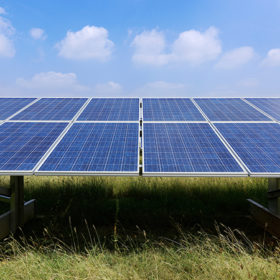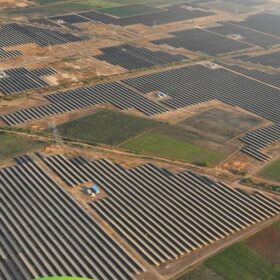India stands at a pivotal moment in its energy transition journey, with hydrogen emerging as a cornerstone of its sustainable future. As the world’s third-largest energy consumer, India faces unique challenges in developing the infrastructure necessary to support a robust hydrogen economy. However, recent developments indicate promising pathways forward.
The promise of hydrogen for India
India’s ambitious climate goals highlight the crucial role of green hydrogen in its future energy landscape. The nation has committed to achieving net-zero emissions by 2070, alongside a 45% reduction in emissions intensity by 2030. To support these efforts, the Indian government, alongside NITI Aayog, is focusing on becoming the world’s lowest-cost producer of green hydrogen by 2030, with a target price of $1 per kilogram. This initiative could transform India into a major player in the global hydrogen market, with projections estimating the sector’s value at USD 8 billion by 2030 and up to USD 340 billion by 2050. By then, India could supply 10% of the world’s green hydrogen demand, reinforcing its role as a clean energy innovator and exporter.
Infrastructure hurdles
The transition to a hydrogen-based economy presents several critical infrastructure challenges for India. First, while the cost of electrolysers is gradually decreasing, the country must significantly scale up its manufacturing capacity to meet its green hydrogen production targets. Transportation and storage pose another major hurdle, as hydrogen’s low volumetric energy density makes it difficult to handle efficiently. This necessitates the development of specialised pipelines, compression systems, and storage technologies.
Additionally, the lack of a dedicated hydrogen distribution network means India must either retrofit existing natural gas infrastructure or invest in building entirely new systems. Lastly, end-use applications such as industrial process adaptation, hydrogen fuel cell development, and the establishment of refuelling stations require substantial capital investment and technological innovation. Addressing these interconnected infrastructure needs will be essential to fully realise the potential of a hydrogen-powered economy in India.
Emerging solutions
Despite the challenges, India is witnessing a surge in innovative approaches and investments aimed at bridging infrastructure gaps.
On the production front, leading Indian companies are investing in large-scale electrolyser manufacturing to reduce costs and build a self-reliant green hydrogen supply chain. This is expected to accelerate domestic hydrogen production while creating new economic opportunities.
Addressing transportation and storage hurdles, several pilot projects are exploring advanced solutions such as high-pressure and cryogenic storage systems, along with the use of ammonia as a hydrogen carrier for long-distance shipping. These alternatives are particularly valuable given hydrogen’s low volumetric energy density.
A critical aspect of enabling a hydrogen economy is the development of safe and efficient pipeline infrastructure. Hydrogen presents unique challenges, such as high diffusivity and the risk of material embrittlement, requiring pipelines made from specially engineered high-grade steel. To address these issues, India has begun developing hydrogen-compatible pipelines to support the safe transport of hydrogen across industrial corridors and future hydrogen hubs.
As a transitional strategy, blending hydrogen with natural gas in existing pipelines is also being explored to reduce costs and accelerate deployment. Supporting this infrastructure push, recent tests conducted by RINA Consulting – Centro Sviluppo Materiali S.p.A., a globally recognised Italian testing and certification agency, have confirmed that domestically manufactured steel pipes meet stringent international standards for hydrogen transport. This validation not only reinforces India’s technical capabilities in hydrogen infrastructure but also highlights the country’s growing role in the global transition toward a low-carbon economy.
Policy framework and industry collaboration
The success of India’s hydrogen economy hinges on collaborative efforts between government and industry. The recently introduced Green Hydrogen Policy offers incentives, including waived interstate transmission charges and banking of renewable energy for 30 days, creating favourable conditions for early adopters.
Companies with “Target 2030” type initiatives for carbon neutrality are particularly well-positioned to capitalise on hydrogen opportunities, as they already have the renewable infrastructure foundation needed for green hydrogen production. Their transition pathways, involving regular audits and sustainability tracking, provide valuable blueprints for the broader industrial ecosystem.
The road ahead
Building India’s hydrogen economy requires strategic infrastructure planning, targeted investments, and supportive policies. As industrial leaders continue demonstrating the viability of renewable energy transitions, the groundwork for hydrogen infrastructure follows naturally. With coordinated efforts across public and private sectors, India’s hydrogen economy can overcome its infrastructure challenges to deliver on its promising potential.
The views and opinions expressed in this article are the author’s own, and do not necessarily reflect those held by pv magazine.
This content is protected by copyright and may not be reused. If you want to cooperate with us and would like to reuse some of our content, please contact: editors@pv-magazine.com.








By submitting this form you agree to pv magazine using your data for the purposes of publishing your comment.
Your personal data will only be disclosed or otherwise transmitted to third parties for the purposes of spam filtering or if this is necessary for technical maintenance of the website. Any other transfer to third parties will not take place unless this is justified on the basis of applicable data protection regulations or if pv magazine is legally obliged to do so.
You may revoke this consent at any time with effect for the future, in which case your personal data will be deleted immediately. Otherwise, your data will be deleted if pv magazine has processed your request or the purpose of data storage is fulfilled.
Further information on data privacy can be found in our Data Protection Policy.